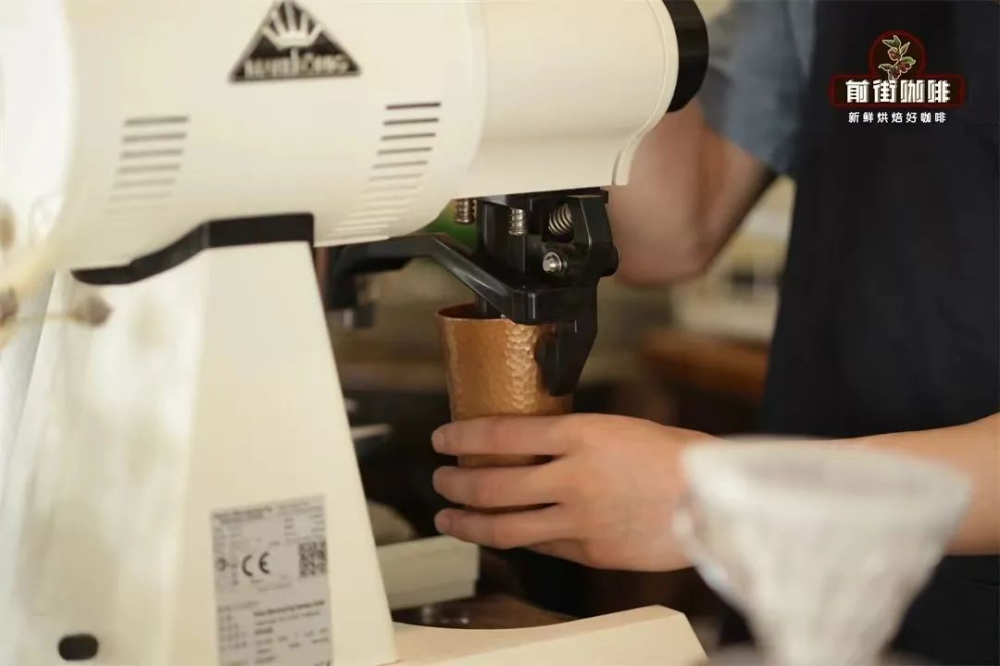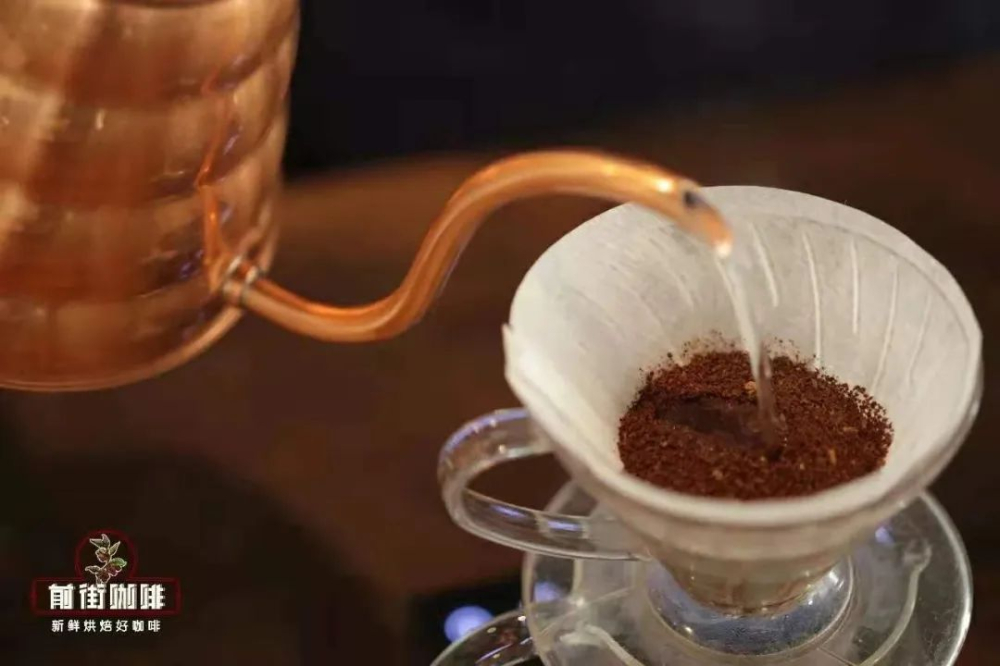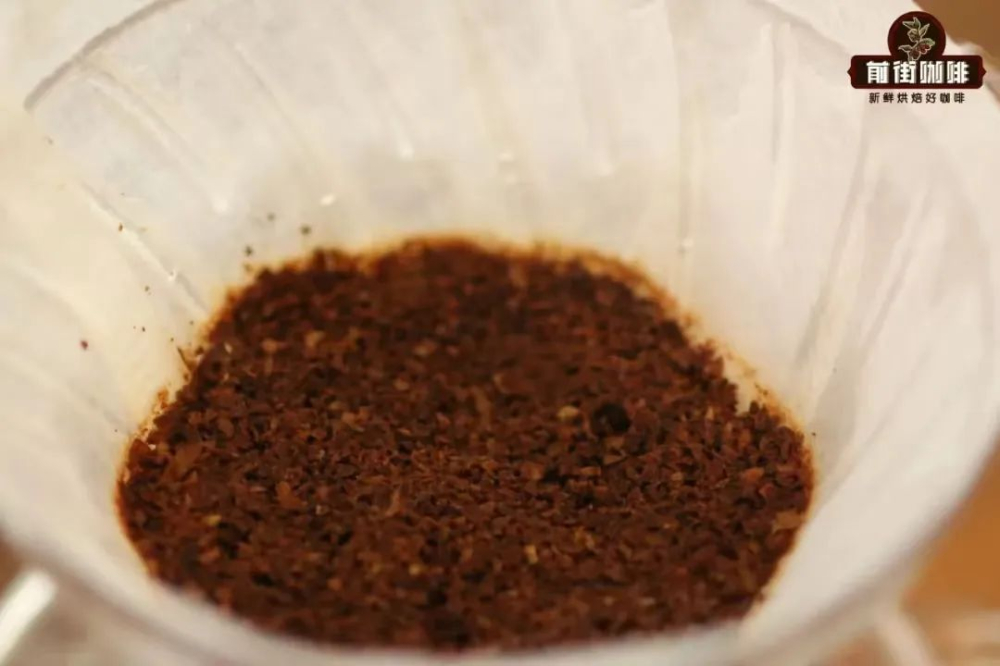What are the precautions for making coffee? What are the five major factors that affect the flavor of hand-brewed coffee?
As the saying goes, "you can't call yourself an old driver without flipping a car." If you touch, crawl and roll on the road of making coffee, you will inevitably encounter all kinds of "rollover sites". Don't be afraid when something goes wrong, the most important thing is to find a way to deal with it. And in some cases, it can save that cup of coffee.
Do you have to pour out the wrong scale when grinding beans? This must have happened to you. You didn't see the scale clearly when grinding the beans or adjusted the scale last time. This time you forgot to adjust it back. When you grind the coffee in the wrong thickness, you have two choices: one is to pour it out regretfully, and the other is to try to brew it, hoping for a miracle.

Qianjie in the science of hand brewing coffee grinding, will recommend the use of a fixed standard, such as Qianjie respected the use of 20 sieve to identify the thickness, hand grinding is 20 sieve pass rate of 70-80%. The fineness of this grinding is the easiest to flush out the coffee flavor in hand-brewed coffee. If you find that the thickness is wrong after grinding, don't throw it out in a hurry, maybe you can save it. First of all, confirm the difference between the ground coffee beans and the common grinding degree, which can be judged by observing the largest particles of coffee powder, or according to the scale of the bean grinder. In the coffee brewing factors analyzed in the front street, the grinding degree, water temperature, proportion and manipulation can make a good coffee with each other. When the degree of grinding changes, if the other parameters remain the same, then the match is out of balance, and the taste of the coffee is naturally wrong. But we can neutralize the difference in the degree of grinding by changing other parameters. We know that the reason why coffee beans are ground is to increase the contact area between coffee beans and water. The finer the grinding, the larger the surface area of coffee beans and the easier it is to release flavor. And the other participant, water, had different levels of water activity at different temperatures. The higher the water temperature, the easier it is to dissolve the coffee substance. On the contrary, when the water temperature is low, it is more difficult to dissolve the coffee substance. The truth of time is the same, the longer the soaking time, the stronger the coffee flavor, and the shorter the time, the lighter the coffee flavor, which can be regulated by means of hand brewing.

Therefore, if the coffee beans are grinded too coarse, the water temperature can be appropriately increased, the steaming time can be prolonged, and the soaking time can be prolonged by small flow water injection. If the coffee beans are finely ground, they can also lower the water temperature, shorten the steaming time, inject water in a large flow or reduce the amount of water by pass. Even if it is ground into Italian powder, there is still "one throw"! -it was found that the powder layer did not expand until the water was injected. Do you want to keep flushing? Sometimes when injecting water, it is found that the powder layer does not bulge, it looks like it has expired, do you want to keep flushing it or not? Well, if you don't flush, you may lose beans, and if you flush, you may lose water. According to this situation, we should continue to rush, and we should rush in an evidence-based manner. First, you can make a simple judgment. You can look at the baking date before cooking. If the coffee beans are not more than 1 month old, you can basically rule out the problem that they are not fresh.

If it is more than a month, then you can smell the dry aroma of coffee and the aroma of steaming. If you still smell the aroma of coffee and do not have some similar peanut clothes, aging flavor, you can continue to brew. If there is, you can give up the struggle and abandon it. In fact, some light roasted coffee with hard beans are not easy to boil and expand, because these beans have higher density, slower water penetration, and slower gas discharge, so they do not form obvious bulging bags, such as Panamanian rose summer coffee beans. These non-expansive coffee powder layers all have a characteristic, that is, it is very easy to block the sewer hole and cause it to soak for too long, which is how the bitter and miscellaneous taste comes from. In the face of this non-expansion phenomenon. In cooking, it is necessary to inject water around a small circle as much as possible, raise the liquid level, reduce the thickness of the powder layer at the bottom, and reduce the risk of clogging. Of course, there are many cases of desperately rubbing at the edge of the rollover, and it is necessary to improvise to pull the coffee back from the edge of the rollover.
Important Notice :
前街咖啡 FrontStreet Coffee has moved to new addredd:
FrontStreet Coffee Address: 315,Donghua East Road,GuangZhou
Tel:020 38364473
- Prev

What is the right extraction time for espresso machine? Requirements for standard espresso
In brewing coffee any coffee, there is one parameter that cannot be avoided, and that is the extraction time. Espresso is more time-sensitive than other ways of making it. This is because the extraction time of espresso is relatively short, and the gap varies greatly from second to second. Therefore, the extraction time is related to
- Next

Hand-brewing coffee techniques meteorite flushing techniques introduce how to make deep-baked bitter coffee beans?
Today Qianjie continues to share with you the interesting method of hand flushing-"meteorite impact"! The origin of the name is that after brewing coffee, the powder layer will form a deep crater like a crater. Let's take a look at how to play! This method is suitable for deep-roasting coffee beans, and it takes advantage of the fluffy and easy water absorption characteristics of deep-roasted coffee beans.
Related
- Beginners will see the "Coffee pull flower" guide!
- What is the difference between ice blog purified milk and ordinary milk coffee?
- Why is the Philippines the largest producer of crops in Liberia?
- For coffee extraction, should the fine powder be retained?
- How does extracted espresso fill pressed powder? How much strength does it take to press the powder?
- How to make jasmine cold extract coffee? Is the jasmine + latte good?
- Will this little toy really make the coffee taste better? How does Lily Drip affect coffee extraction?
- Will the action of slapping the filter cup also affect coffee extraction?
- What's the difference between powder-to-water ratio and powder-to-liquid ratio?
- What is the Ethiopian local species? What does it have to do with Heirloom native species?

